“Quality of movement, brings quality of health, which brings quality of life. Win Win”
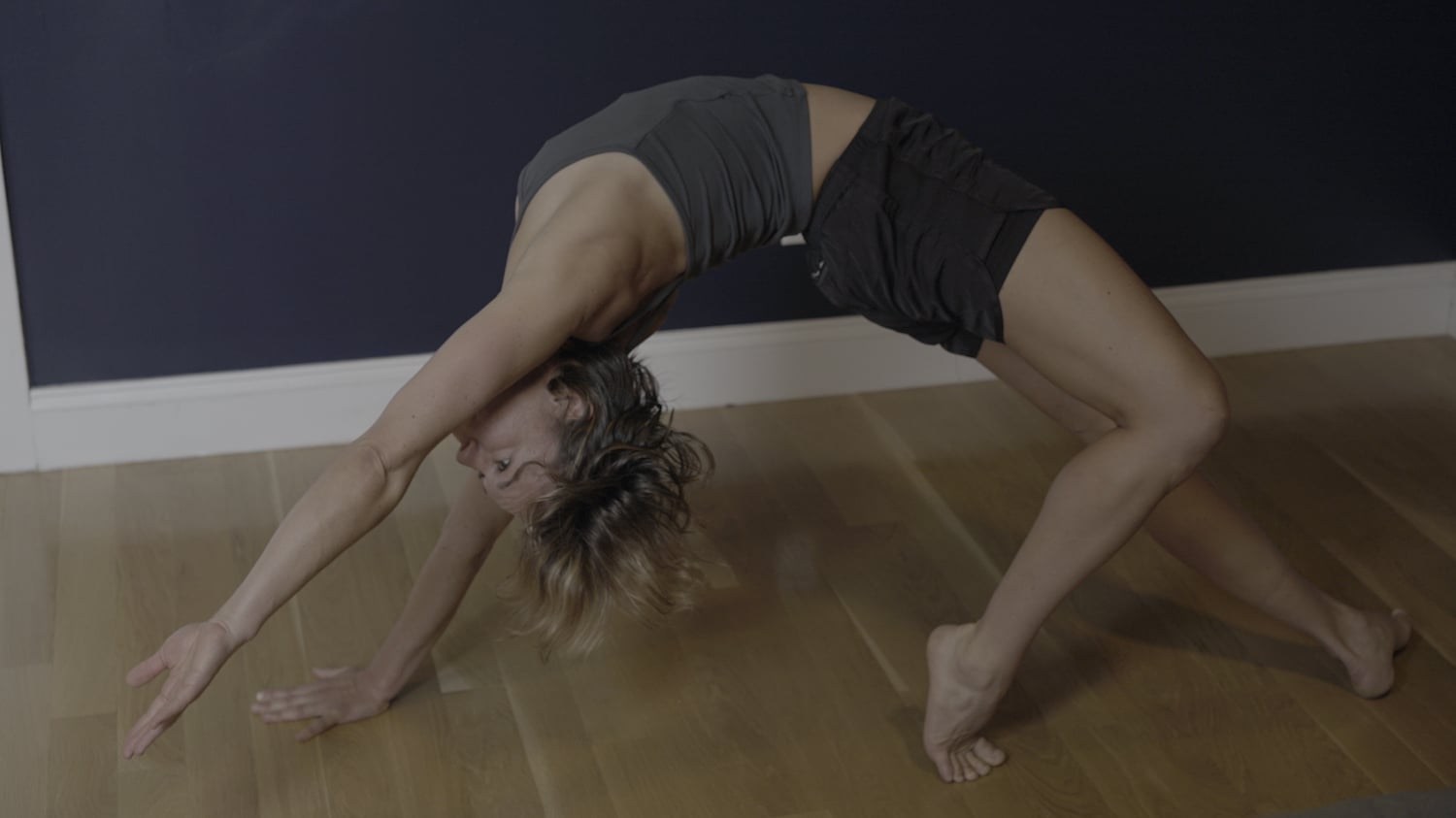
Interview with Bodylistics® founder, Frances Collier (2 minutes)
To learn more about Frances’ credits and her in-person work
We all are born to move both mindfully AND bodyfully! The creator of Bodylistics®, Frances Collier has developed a very personal and bespoke approach that uniquely integrates all aspects of life and individual circumstances. Her focal point lies on breaking patterns and habits, leading to efficient and long-lasting improvement, and most importantly igniting spark and movement-health-passion again. With over three decades of teaching the logistics, the mechanics, the linguistics and the artistics of the body, Frances thrives on guiding you to a pain-free, joy-filled movement life. Amalgamating a unique wealth of experience in respected movement practices, somatic fascia therapy, functional anatomy, hands-on dissection courses, abdominal-visceral therapy, dynamic yoga and neurolinguistic programming NLP which are deeply complemented by her knowledge as a professional dancer, performer, trainer, coach, life-lover, mentor and therapist to high-profile actors and sports people.
Having graduated as a professional dancer at Rambert School in London in 1994, Frances spent two decades dancing with full time repertory companies in Europe and as a freelance artist in London. Her professional experience covers performing a wide range of ballet, contemporary and musical repertory as well as being rehearsal director and choreographer on various projects whilst building a thorough on-and-off-stage-understanding when it comes to injury management and prevention.
Frances specialises in providing in-person as well as on-line injury management & prevention, movement coaching, training & physical consultancy for famous Movie and West End theatre productions. She loves working with professional performers, artists and sports people as well as helping active people from all walks of life.

Interview with Bodylistics® founder, Frances Collier (2 minutes)
We all are born to move both mindfully AND bodyfully! The creator of Bodylistics®, Frances Collier has developed a very personal and bespoke approach that uniquely integrates all aspects of life and individual circumstances. Her focal point lies on breaking patterns and habits, leading to efficient and long-lasting improvement, and most importantly igniting spark and movement-health-passion again. With over three decades of teaching the logistics, the mechanics, the linguistics and the artistics of the body, Frances thrives on guiding you to a pain-free, joy-filled movement life. Amalgamating a unique wealth of experience in respected movement practices, somatic fascia therapy, functional anatomy, hands-on dissection courses, abdominal-visceral therapy, dynamic yoga and neurolinguistic programming NLP which are deeply complemented by her knowledge as a professional dancer, performer, trainer, coach, life-lover, mentor and therapist to high-profile actors and sports people.
Having graduated as a professional dancer at Rambert School in London in 1994, Frances spent two decades dancing with full time repertory companies in Europe and as a freelance artist in London. Her professional experience covers performing a wide range of ballet, contemporary and musical repertory as well as being rehearsal director and choreographer on various projects whilst building a thorough on-and-off-stage-understanding when it comes to injury management and prevention.
Frances specialises in providing in-person as well as on-line injury management & prevention, movement coaching, training & physical consultancy for famous Movie and West End theatre productions. She loves working with professional performers, artists and sports people as well as helping active people from all walks of life.
To learn more about Frances’ credits and her in-person work
Awards, Events & Publications
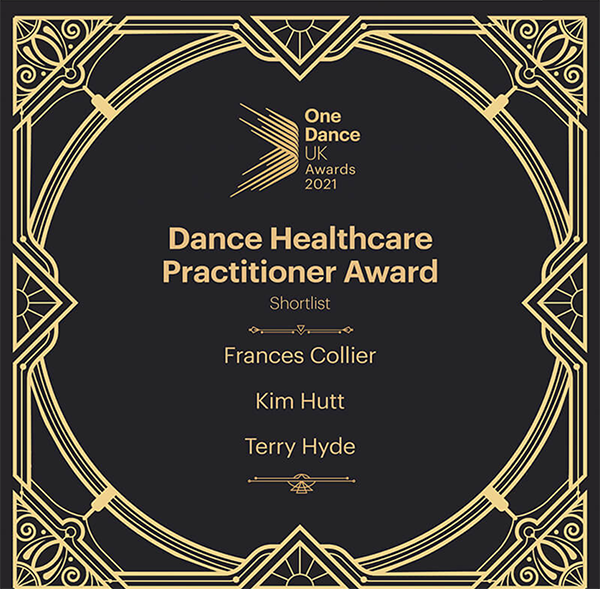
Bodylistics® has received high acclaim from various professional bodies, we have been officially nominated for the Dance Health Care Practitioner Award by One Dance UK
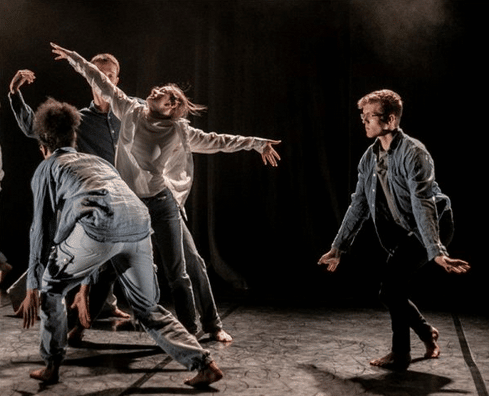
Frances’ recent discussion with One Dance UK, Wellbeing Wednesday Writings about the triumphs of innovative dance-specific healthcare.
Interview for Integrative Health Convention
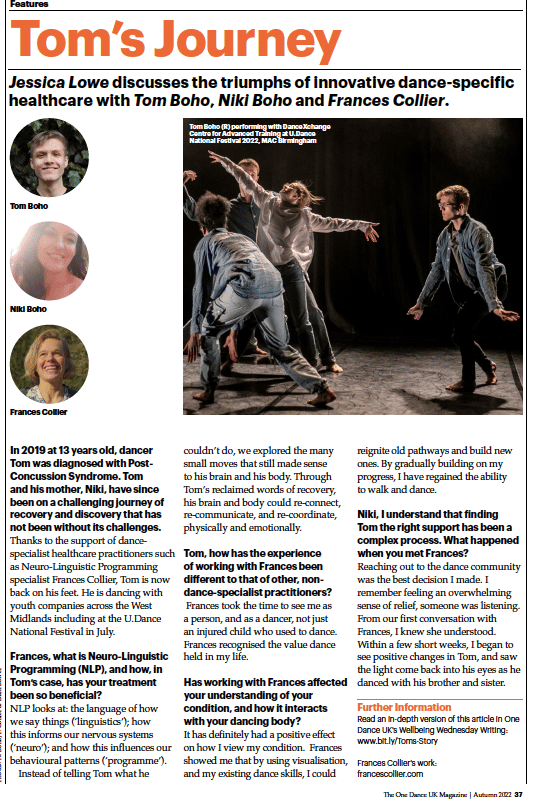
Read an in-depth version of this article in One Dance UK's Wellbeing Wednesday Writing by clicking HERE
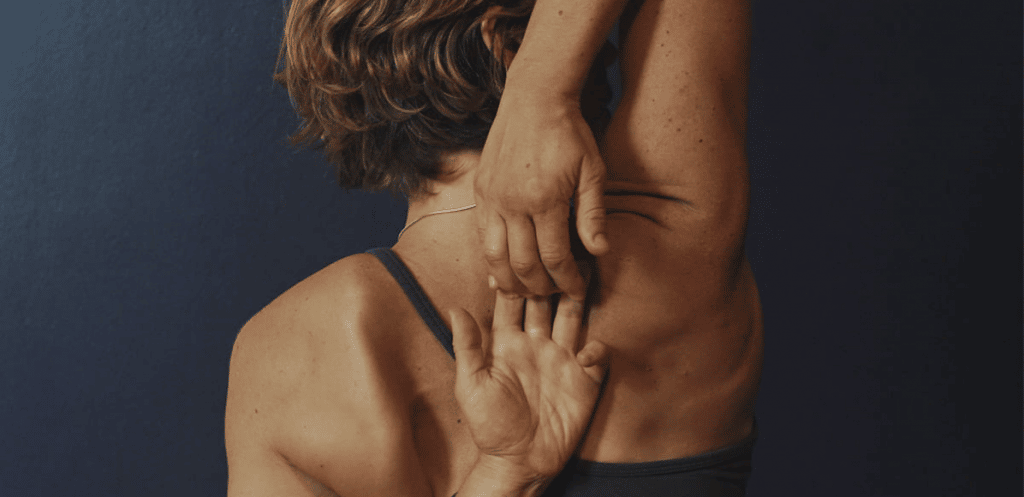
Frances talks to One Dance UK, Wellbeing Wednesday Writings – all about her professional practice and endeavours in Movement Health.
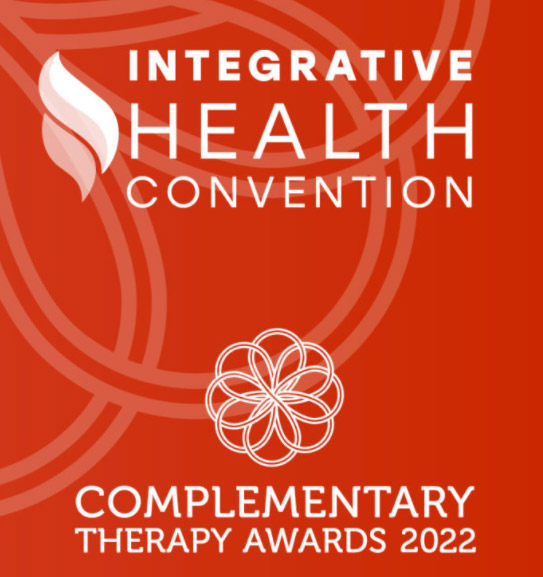
Speaker at Integrative Health Convention
The Integrative Health Convention took place on February 11th 2022, where Frances had the honour to speak in the afternoon of the convention. Please see her interview with the host to get a taster of it.
Interview for Integrative Health Convention
October 6th2021
15mins interview for Integrative Health Convention
Dr Toh Wong is a General Practitioner, GP Trainer, Medical Acupuncturist, Clinical Hypnotherapist, Master NLP trainer.
Here in conversation with Frances Collier, Bodyworker, Movement Coach and Founder of Bodylistics®.
TOH:
Hi Frances, thanks so much for joining us today.
FRANCES:
Hi, Toh, thank you very much for inviting me, I feel very honoured.
TOH:
Frances has kindly agreed to come to be one of our speakers on the 11th of February 2022 to the Integrative Health Convention virtual event. Frances is a performer, teacher, dancer and coach, and she's created this wonderful platform called Bodylistics®. Her passion is really movement, and what she's got on this platform is she shows you lots of different ways you can keep moving and keep healthy- and maybe she'll tell us a little bit more about it. But she’s going to come to speak to us about movement, and how we can use it for health. But before you do that, Frances, could you tell us a bit more about how you got interested in it and a bit about yourself.
FRANCES:
Well yes I really am so passionate about movement- I think it's been in my life from before I was even born! So, from when I was just a little girl I looked at nature and how things were moving. I loved mechanics and was always playing with tangible things, building stuff and just how to translate this into my body. And then I was very lucky that I fell into dancing. It was a very creative way of dancing, and the music and the sensing and the interpreting of delving into being different characters and with it exploring different movement patterns suited me very well. I then became a professional dancer. I was always very interested in how to relate to the music and how to make things work for the body that seemed impossible- how do you make the impossible possible. I started studying movement anatomy in theory but also in various hands-on ways.
As a dancer, obviously you start to have little niggles as you go along in your career. And so I’ve always instinctively helped people and helped myself to try not to get injured. So from the word go injury prevention was very much something that I grew up with as I learnt about movement more and more. But for me it was all very based on the melody and the music and the quality of the movement which is so special to dancing.
I trained at the Rambert School in London and then went on to having an international career for twenty years in repertory companies, ballet, contemporary, being rehearsal director, doing my own choreographies, and then performing in the West End. Ten years ago I transitioned into being more backstage, and actually helping theatre companies and performers not to get injured. Because they do eight shows a week of movement that's repetitive, I thought well there's no point in sorting out a shoulder pain just as a shoulder pain- but it's going to be about how to reprogram the movement to stay pain-free long-term. Through working with people a lot, I decided it was time to engage in extensive NLP training (neuro linguistic programming) and I loved that the same principles apply to mind and body, because movement is a language just as much as any other language. In the very same way that NLP helps with how you change the language with your mind is how you keep yourself from getting injured in your mind. And therefore how you change the language for your body is how you keep yourself from getting injured in your body (we could call it NLBP: neuro linguistic body programming). So the injury prevention very much became mind-body-connected. And through the dancing with this sort of creative aspect, as well as the somatic and the emotional, it became a very valued combination. Whilst I was looking after the West End companies, I realised they had mainly traditional ways of physiotherapy and doctors and the whole conventional way of science medicine to look after them. So to be coming in as a dancer and a performer myself and bringing the aspect of that to them, it became this package that was so very valuable as a combo approach.
On the way of learning, I've had the privilege of experiencing loads of hands-on dissection courses, and that I think for me brought it all together. Because suddenly the philosophy of what I had inside of me, learning through the movement, I could see it on the real bodies in the flesh, outside AND inside. And it confirmed that it isn't just a muscle that has an origin and insertion as in a beginning and an end, but it is all continuous. It's all fascia and you can pull on your foot and you see it moving your hip, and that's really how it works anatomically. I've always felt this in my body. But to see it on the forms that we had the honour of working with, just brought it all together. Seeing how the whole, I don’t know let’s say for example the whole neuro system is like tree branches, or that the fascia is like the waves of the ocean, and suddenly we see the creative aspect of nature and movement flowing all in one. I very much bring this into the movement quality of what I work with today. And with that, helping the body and the mind but also seeing the person in their environment. Which is sort of the third aspect to come in: it's all very well to learn about your body, it's all very well to learn about your movement, or about your mind, but how does it actually work in YOUR life. Because you might be busy with looking after kids, or you might have a commuting job, or you might not sleep very well, or you might go through a change of life- so all of these things that you’re given to help you stay healthy: how are you integrating them, realistically, into your life.
Obviously, a performer has a very extreme way of living. You have shows till late at night, you have to be very active, it goes against your body clock, it's high intensity. I work with a lot of high-profile actors, it's a lot of stress, six o'clock in the morning, make-up and having to perform something like, I don't know, say playing someone who has to fist-fight or something, so it's a very stressful and un-organic way of living. Having been able to work with them then also helped me translate this to people who have a bit more of a, shall I say, normal life. And so what can you do in your everyday life, as simple as in your kitchen, in your bathroom, whilst you take a shower, whilst you're brushing your teeth, little movements of changing your way of your language that you use with yourself, with your mind, and whatever it is, it's going to be a good movement day. The language you use for your mind is also the language you then use for your body. So whilst you're brushing your teeth do your little movements, do your hip movements, do your spinal flow, so that you're ready for the day warmed up. And you will actually be walking out into the day feeling well. And then you have little bits in between, whilst the kettle is boiling, or whilst you're cooking, or whilst you’re in the car sitting at a red light, whilst you're walking, whilst you're on the phone with someone, tiny little movements, for your mind and for your body. And that brings the health into your daily life. So no matter what your job or environment is you have this, well, it’s like a structure in your life that just becomes second nature. So health gradually just comes into your life all the time a little bit, so you can only get healthier. Because the more you do of it, the healthier you get.
This is it in a nutshell, well not really a nutshell, a big shell.
TOH:
Wonderful. So it's for anyone really. And certainly sounds like your high-profile actors and your performers are a bit like a lot of doctors that we know are really highly stressed, highly strung, and doing odd hours. I think they definitely benefit from something like this. But when we first met, one of the things you do that blew my mind was you saying we aren't really taught how to move properly, are we. We just get used to moving in our two or three ways. Just like for our tools for breath work, we aren't really taught to breathe properly, which is instinctively developed on the way, but yet we have to be taught to swim properly, to swim better with a better form so that we can move faster. So, I was quite blown away by your thoughts on how we even walk etc. And that’s why the way you’re sharing these things is so particularly unique I think.
FRANCES:
Thank you. Well, I think that's why I find it very intriguing in a way of where are the basics.. If you learn a language, if you learn French for example, you don't start with a major huge book of French, you start with tiny little words and you learn to put them together, and then you go deeper, you study your grammar, and then you start building on it, and you have the theory and practice, and you practice all the time a little bit. If you just have one class a week or even if you go on holiday to France here and there it's just not enough. You need to, if you really want to learn the language, you need to go there, you live there, you speak it every day a little bit. And you actually learn it very quickly! And it's the same with our basic movements.
Which is why some people go for a walk and always have pain, or they go for a run but no one teaches you to run, it’s just assumed you know how to do that. No one teaches you how to sit, and most people do it all day long! So it's studying a little bit of it all the time.
Again that's where dancing comes in because you have to study movements to such a meticulous detail, and then you make it one flowing thing. So you spend hours just doing the tiniest, tiniest little movements with your feet, with your toes, with just warming up, and people think: where's your training, like what do you do? And suddenly you’re able to perform big jumps and you know it's because the detail has been trained. It's a minute neuro pathway process and programming. And this is the same for our everyday movement. We just assume that we know how to sit – or even slouch on a sofa watching TV and then wonder why our backs are hurting. Well, if you study how to slouch, it's okay to slouch, if you do it in the right way. So whatever you do in your daily life (well, obviously, try not to slouch, but sit properly!!-) you then suddenly learn and crave to sit in a way that you feel comfortable because it makes more sense. It's comfortable to sit in the right angle for your spine and pelvis, in the same way that it’s more comfortable to walk with your knees bent (which is how we all should be walking by the way) because it's actually softer on all your joints. So your body's going to look for that way of healthy and optimal moving, because it is actually more comfortable. So if you sit on a chair and your body feels well about sitting that way, it will look for the comfortable way of doing this, which will be the healthy one, if you train the detail in the right way.
What I'm also very interested in relation to movement is the whole visceral aspect. That I only found a few years ago, which again I find very intriguing that I've been working with bodies all my life and I have been a professional movement body worker, anatomy, movement studies, you name it, I've done it, and it was only a few years ago through the dissection courses, that I was able to explore this link unprecedented in situ. I was mesmerised by the direct anatomical connection of the gut, the organs, the bladder, the womb, the prostate, whatever your area of interest or concern, it's all there, connected with our daily movement patterns. Everything is either directly linked or really close by, so if we have a hip problem of course it could be linked to our gut which could be linked to our diet which could be linked to the way we sit, and also to our emotions, because a gut feeling is an emotional feeling. So if we don't sit in the right way, all of these aspects are affected. And if we start to move our pelvis in a way that's flossing and flowing and rivering, everything will river, my hip will be fine, my joint will be fine, my gut will be fine, my diet will be fine, my breath will be working because my diaphragm is working optimally, everything will fall into place. And I'll feel comfortable moving or sitting in this way just because I’ve done these little micro movements that make me feel comfortable and therefore healthy. So comfort can be health if it's done in the right way. And I think it's really looking for the quality of the movement. Rather than saying “which exercise shall I do” or “this is still hurting” or “there’s nothing I can do”, scrap that because YES THERE IS EVERYTHING YOU CAN DO! It's actually as simple as looking for the quality of movement that works for you and also for your personality. Some people are fast, some people are slow, some people need time, some people need to be really on top of things, so go and explore to get that quality that works for your body type and your personality in your lifestyle and your environment, to bring comfort.
Quality of movement
brings quality of health
which brings quality of life.
Win Win.
TOH:
Wow you've got so much to deliver, Frances, that was amazing. We're going to look forward to your talk on the day on February 11th 2021. Thank you for doing this with us and look forward to seeing you then. Where we'll talk to each other more about lots of different things. Thank you.
FRANCES:
Thank you very very much. I'm very excited and look forward to seeing you there.
---------------------------------
I was joined on the day by expert key speakers helping us understand how complementary therapies and lifestyle/wellness services are integrating with conventional medicine to enhance patient care:
Frances Collier,Physical Consultant (Body Specialist, Movement Coach, Dancer) Bodylistics®
Paul Mckenna,behavioural scientist and hypnotist
Dr John Demartini,human behaviour expert, author, global educator and the founder of the Demartini Method
Carrie Grant MBE, Broadcaster, Vocal and Leadership Coach and Campaigner
Dr Anthony Abbagnano, Founder, Alchemy of Breath
Dr Michael Dixon, Chair, The College of Medicine
Dr Harald Stossier, author and Director, VIVAMAYR Maria Worth clinic
Dr Angela Goyal, Founder, Inspired Medics
Dr Toh Wong, GP, hypnotherapist, acupuncturist, NLP & NLH Trainer & Convention organiser
Dr Naveed Akhtar, GP, hypnotherapist, acupuncturist, NLP & NLH Trainer & Convention organiser



